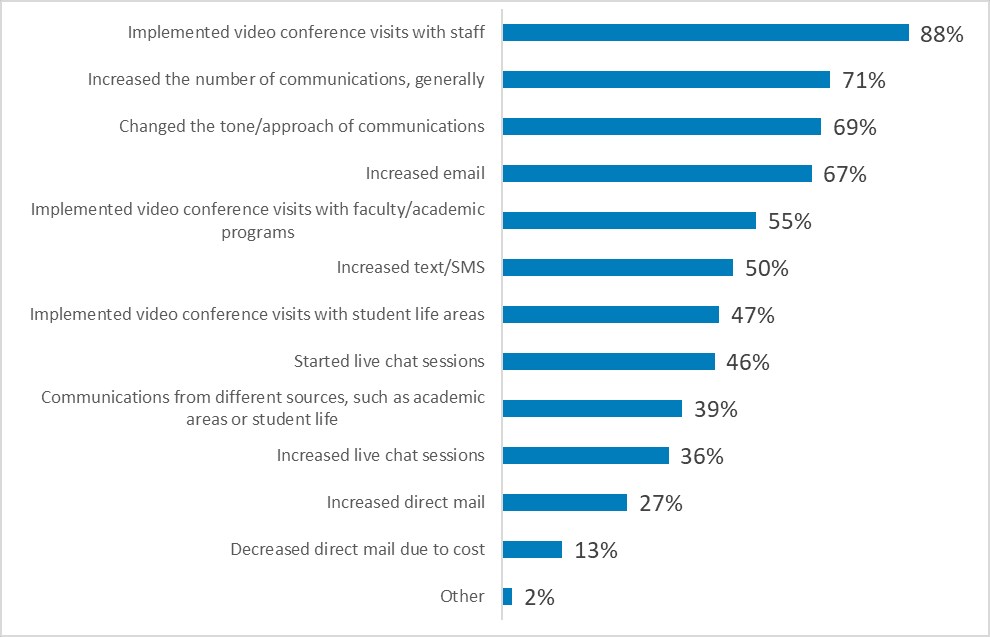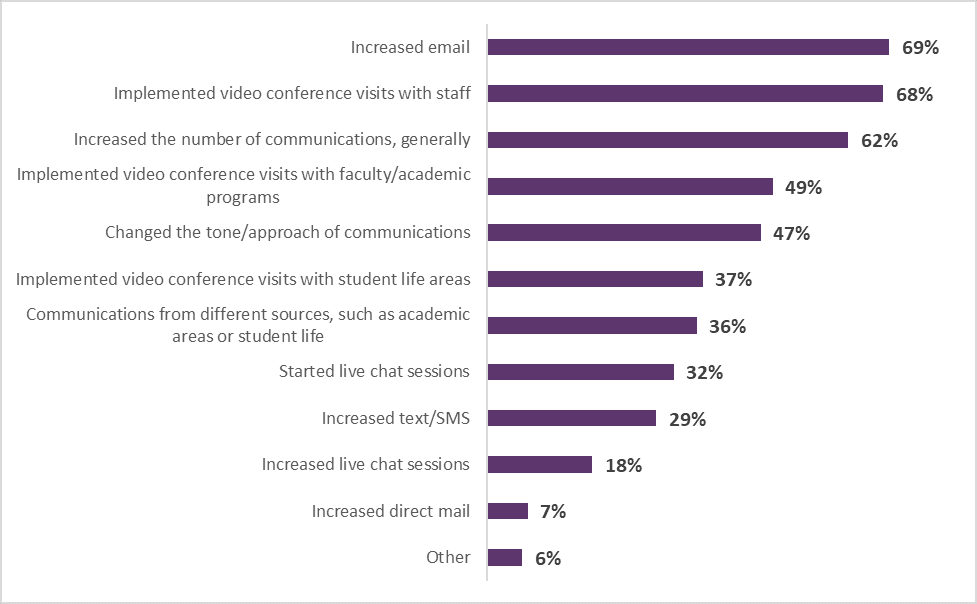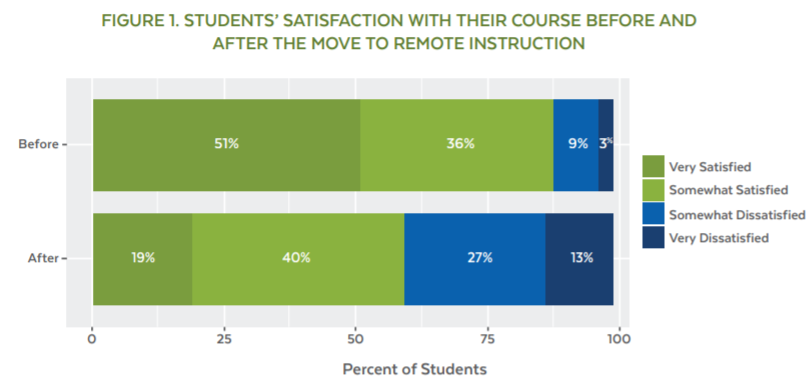Commentary
Food for thought - AACRAO has been fortunate to be part of a series of transfer credit loss-related research in the last couple of years, which has expanded our understanding of student perceptions of transfer and the impact of institutional policies on credit lost in transfer. Included here is an excerpt from the just released report on transfer credit and advising policy and practice. This excerpt includes the rationale for a reframed definition of lost credits.
“. . . the literature on the transfer of credit often uses the term ‘lost credits,’ or something similar, when describing any credit that is not awarded or applied to a program of study in transfer. This situation is perceived within the culture of higher education as a predominantly negative experience for a student. However, this appears to be an institution centric definition and a narrow one. We should recall from the ACE and AACRAO surveys of transfer students, and other similar research, that not all students who ‘lost’ credits in transfer viewed that fact negatively. They understood that not all credit would transfer yet still perceived value in earning those credits. In other words, student course-taking choices related to career and/or major exploration, personal enrichment, and/or dual enrollment in high school may contribute to ‘lost credits’ by the current definition. However, those course-taking experiences have value to the student. As a result of this research, lost credits may not be as valueless as originally thought and should be reframed as follows:”
Lost credits are those that: 1) are recorded on an academic transcript which have met content knowledge requirements in a satisfactory manner; 2) a student has sought to transfer this credit to another institution; 3) have learning outcomes that meet one or more the degree program requirements at the new institution; and 4) credit was not applied to the student’s academic program of study at the new institution.
AACRAO Research Update
Policies and Practices for Transfer Credit Evaluation and Transfer Student Advising
The report “A Peek Behind the Curtain: An Examination of Credit Evaluation and Academic Advising for Transfer Students at U.S. Undergraduate Serving Institutions” is now posted to the AACRAO website.
Key Findings
The system of transfer credit policy and practice is complex and multilayered at most institutions.
Most (79%) have transfer articulation agreements with one or more institutions.
Just 8% limit transfer to direct course equivalencies only.
More than half place a limit on the number of transfer credits that will be awarded in transfer.
Slightly more than half use automated articulation rules to assist with transfer credit evaluation.
17% require that a student request a transfer credit evaluation.
63% share a detailed report with transfer students about how their credits apply to their selected program of study; 37% do not.
51% tell students why credits were not awarded in transfer; 49% do not.
23% only award credit that applies to the major at the time of admission regardless of other equivalencies on the incoming transcript.
Most institutions have a mixed model for advising transfer students. That is, no one model (active, passive, blended) is used by all advisors who interact with transfer students.
14% do not require transfer students to meet with an academic advisor.
Impacts of 2020 Disruptions on Work and Career
A few more insights from this survey are shared below. Further content related specifically to this data and the chief enrollment management officer (CEMO) will be a session at AACRAO’s first virtual SEM conference.
Change in Prospective Student Communication

Change in Current Student Communication

CEMO Survey Preliminary Data
A report based on the CEMO data will be available in November. Preliminary data indicate that 12% of current CEMOs intend to change jobs in less than a year, and another 38% in one to three years. In addition, career path characteristics include the following:
13% of CEMO positions require a doctorate; 75% require a master’s.
33% of current CEMOs came to their current role from another CEMO position; 40% came from another position in the same institution.
Among those not previously a CEMO, 37% came from admissions and/or recruitment, and 18% came from another enrollment management position.
47% have been in higher education 25 years or more.
Most have spent their entire career in higher education.
Most have changed institutional sizes and controls in their career.
Stranded Credits
ITHAKA S+R sponsored the AACRAO report “Stranded Credits: Another Perspective on the Lost Credits Story.” Stranded credits are one part of the lost credits story; other areas that impact credit lost in transfer are student choices, institutional policies and practices (see above), and student course outcomes. Of all institutions surveyed, 95 percent withhold transcripts for one or more reasons, and 96% of those do so for an outstanding balance. Of those who withhold for an outstanding balance, 64% do so for a balance of $25 or less.
Blockchain in Higher Education
AACRAO is partnering with Hyland Credentials to conduct research on the adoption rate of digital credential solutions as well as the satisfaction with, and future plans for, the many solutions for digital credentials. The newest solution is blockchain. If you are unfamiliar with blockchain in the context of educational records, I recommend this video from the U.S. Department of Education. The incentivized survey will be deployed on November 9th to AACRAO primary contacts in the United States.
Current Higher Education Research and Related Topics
Included here are links to six research projects released since last month’s blog.
Education Dive summarized the new report from New America on the financial impact on students who earn a bachelor’s degree from a community college. A primary finding was that students who received a bachelor’s degree at Florida community colleges earned about $10,000 more than those who completed an associate’s when matched for similar fields.
Digital Promise released the results of a national survey of 1,008 U.S. undergraduates during the pandemic. The survey content ranged from asking about online course delivery content to student satisfaction with remote instruction (see figure 1 below).

Inside Higher Ed announced their new report, “The Transfer Landscape: a Survey of College Officials.” The content compliments AACRAO’s work in the transfer arena.
Strada Education Network updated data from their ongoing COVID-19 Work and Education Survey.
Educause released a report based on data from more than 16,000 undergraduates from 71 institutions. This report focuses on students’ attitudes and experiences with technology.
NACAC surveyed more 1,100 member colleges and universities. The focus of the survey was to help understand how data is being used by admissions offices for strategic enrollment management